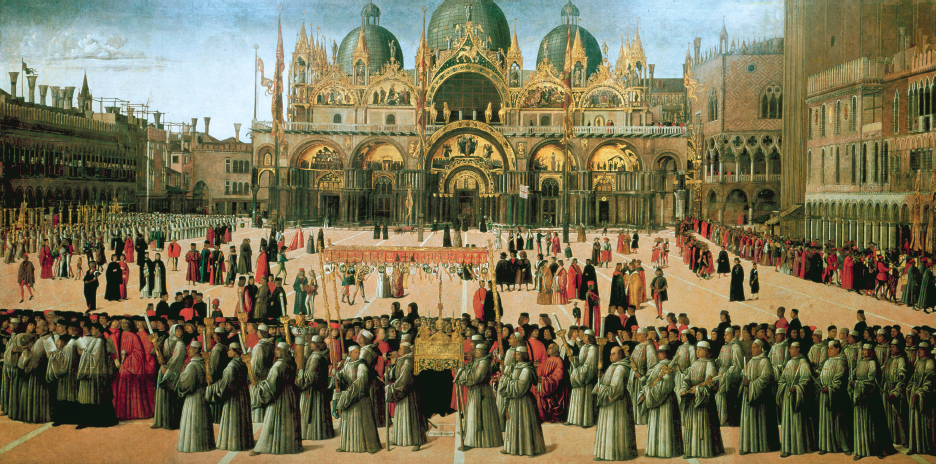America’s History: Printed Page 19
America: A Concise History: Printed Page 18
America’s History: Value Edition: Printed Page 18
Expanding Trade Networks
In the millennium before contact with the Americas, Western Europe was the barbarian fringe of the civilized world. In the Mediterranean basin, Arab scholars carried on the legacy of Byzantine civilization, which had preserved the achievements of the Greeks and Romans in medicine, philosophy, mathematics, astronomy, and geography, while merchants controlled trade in the Mediterranean, Africa, and the Near East. This control gave them access to spices from India and silks, magnetic compasses, water-powered mills, and mechanical clocks from China.
In the twelfth century, merchants from the Italian city-states of Genoa, Florence, Pisa, and especially Venice began to push their way into the Arab-dominated trade routes of the Mediterranean. Trading in Alexandria, Beirut, and other eastern Mediterranean ports, they carried the luxuries of Asia into European markets. At its peak, Venice had a merchant fleet of more than three thousand ships. This enormously profitable commerce created wealthy merchants, bankers, and textile manufacturers who expanded trade, lent vast sums of money, and spurred technological innovation in silk and wool production.
Italian moneyed elites ruled their city-states as republics, states that had no prince or king but instead were governed by merchant coalitions. They celebrated civic humanism, an ideology that praised public virtue and service to the state and in time profoundly influenced European and American conceptions of government. They sponsored great artists — Michelangelo, Leonardo da Vinci, and others — who produced an unprecedented flowering of genius. Historians have labeled the arts and learning associated with this cultural transformation from 1300 to 1450 the Renaissance.

The economic revolution that began in Italy spread slowly to northern and western Europe. England’s principal export was woolen cloth, which was prized in the colder parts of the continent but had less appeal in southern Europe and beyond. Northern Europe had its own trade system, controlled by an alliance of merchant communities called the Hanseatic League centered on the Baltic and North seas, which dealt in timber, furs, wheat and rye, honey, wax, and amber.
As trade picked up in Europe, merchants and artisans came to dominate its growing cities and towns. While the Italian city-states ruled themselves without having a powerful monarch to contend with, in much of Europe the power of merchants stood in tension with that of kings and nobles. In general, the rise of commerce favored the power of kings at the expense of the landed nobility. The kings of Western Europe established royal law courts that gradually eclipsed the manorial courts controlled by nobles; they also built bureaucracies that helped them centralize power while they forged alliances with merchants and urban artisans. Monarchs allowed merchants to trade throughout their realms; granted privileges to guilds, or artisan organizations that regulated trades; and safeguarded commercial transactions, thereby encouraging domestic manufacturing and foreign trade. In return, they extracted taxes from towns and loans from merchants to support their armies and officials.
TRACE CHANGE OVER TIME
Question
How did the growth of commerce shift the structure of power in European societies?